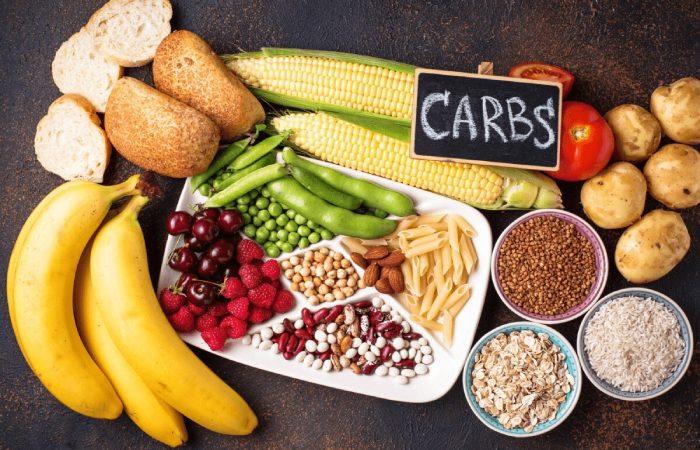Table of Contents
Introduction
Carbohydrates are biomolecules of chains of hydrogen, carbon, and oxygen, although they may also contain nitrogen, sulfur, or phosphorus. They are a quick energy source for the body and are characterized by their sweet taste.
The body breaks down carbohydrates and turns them into glucose, which the body’s cells need. Glucose absorbs into the bloodstream, and this causes the blood sugar level to rise. As the level of sugar rises in the body, the pancreas releases a hormone called insulin. Insulin is needed to move glucose from the blood into the cells, energy sources.
Carbohydrates In a healthy diet, it is essential to include It . Thanks to them, our body gets the energy it needs day by day. But do you know what carbohydrates are? Here we talk more about them and tell you what the foods that contain carbohydrates are.
What are Carbohydrates?
Carbohydrates such as proteins and fats are a type of macronutrient. These start in both food and beverages and mainly in plant-origin products. Although usually, they are associated with a diet that encourages overweight, the truth is that carbohydrates are not harmful if they are intense in moderation; in addition, their daily intake should be greater than the consumption of proteins and fats. Carbohydrates should be present in a healthy diet.

Carbohydrates remain compounds that contain carbon, hydrogen, and oxygen. They burn to produce energy and release carbon dioxide (CO2) and water (H2O) during metabolism.
Carbohydrates should represent between 45% to 65% of our daily calories, or what would be the same, about 225 to 325 grams of carbohydrates per day.
Groups of Carbohydrates
Carbohydrates divide into three groups:
Monosaccharides, e.g., glucose, fructose, and galactose.
Disaccharides, case sucrose (table sugar), lactose, maltose.
Polysaccharides, case, starch, glycogen (animal starch), cellulose.
Here are the benefits that carbohydrates provide to your body:
They give you energy by breaking it down into simple sugars that pass through the bloodstream.
They protect your body against disease, especially when you consume them in the form of whole grains and fiber.
What are the Foods that Contain Carbohydrates?
Here is a wide variety of foods that contain It. The richest in macronutrient stand tubers, cereals, sugar, fruits, vegetables, and dairy. These foods contain It and are sound because they easily digest and absorb the body. However, along with the above, there are also indigestible carbohydrates. Those get this name because the human body cannot digest and absorb them as nutrients; however, they are necessary for digestion as they provide fiber—indigestible It found in fruits and vegetables.
Here is a list of some foods that contain carbohydrates
Tubers: they can institute in cassava, potato, sweet potato, ulus, goose, among others.
Cereals: such as rice, wheat and their derivatives: bread, noodles, and flour; quinoa, oats, among others.
Whole grains: thanks to their fiber content, they provide a more excellent feeling of satiety. This type of carbohydrate consumption is associated with a lower risk of heart disease, diabetes, and other health problems.
Fruits and vegetables are a source of natural fructose sugar fruits, contain fiber, and should preferably consume fresh.
Dairy products contain lactose, the natural sugar typical of dairy products. Create milk, cheese, and yogurts. Lactose contributes to the absorption of calcium present in dairy products.
Mantras: Like lentils, beans contain carbohydrates known as starch. In addition, they are a source of fiber, vitamins, and minerals. The ideal is to consume mantras combined with a cereal such as rice to complement the quality of the proteins.
Now that you know which foods cover It and provide the most energy to the body, it would be ideal for sharing this content with your friends or family. That way, they will learn the importance of this nutrient and live healthier.
Carbohydrates sugar molecules. Besides protein and fat, It three primary nutrients found in food and drink. Glucose, or blood sugar, is the primary source of energy for the body’s cells, tissues, and organs
Conclusion
A carbohydrate is a biomolecule involving carbon (C), hydrogen (H), and oxygen (O) atoms, usually with a hydrogen-oxygen atom ratio of 2:1 (as in water) and thus with the empirical formula Cm(H2O)n (when may or may not different from n). However, not all It conform to this precise stoichiometric definition (e.g., uranic acids, deoxy-sugars such as fucose), nor all chemicals that do conform to definition automatically secret as It.
